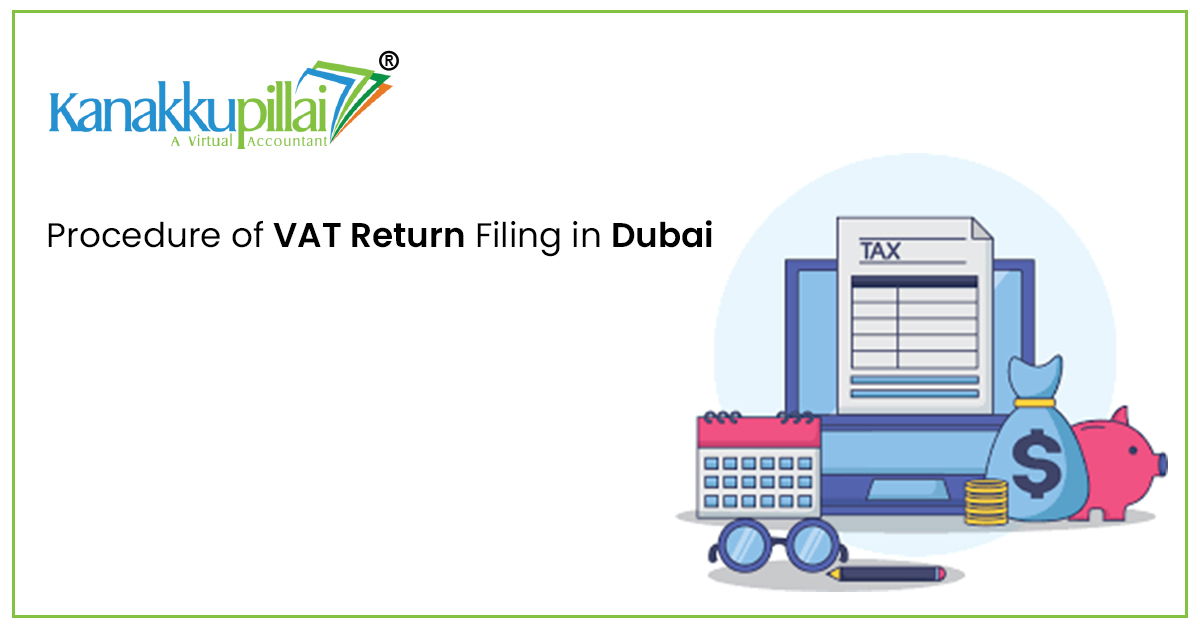Value Added Tax (VAT) is a tax imposed on every level of product value addition across the supply chain. It is imposed at every point of sale, from the producer to the final customer. This is accomplished by enabling tax paid on purchases, also known as “input VAT,” to be offset against VAT received on sales, also known as “output VAT.” The customer ultimately pays the whole tax.
The COVID-19 epidemic has had an influence on everything. As a result, the UAE government has taken a number of steps to provide assistance to enterprises, both onshore and offshore. The solutions include lowering renewal costs and altering employment restrictions to provide firms with more flexibility during the pandemic. Some of these measures are described in more detail below. The UAE’s federal government has implemented the ‘Targeted Economic Support Scheme’ as a major measure. This initiative was launched on March 15, 2020, with the goal of providing aid to private firms that have been harmed by the epidemic.
The plan explains how private companies can get relief from principal and interest payments on existing loans. The proposal involves a fund of AED 50 billion that will be given with no interest. The UAE Central Bank said on April 20, 2020, that 30% of the capital has been used. This will aid in the elimination of the liquidity issues that firms are experiencing. In Abu Dhabi and Dubai, further safeguards have been implemented. The following are a few of them. For the next three months, Dubai’s 2.5 per cent market tax has been suspended for all facilities operating in the city. Additionally, for the next three months, power and water costs will be reduced by 10% for both business and residential reasons. Industrial and commercial penalties have been lifted in Abu Dhabi. Furthermore, until the end of 2020, all cars are exempt from paying road tolls. The registration costs for commercial and private real estate have been stopped in Abu Dhabi. Fee reductions have been implemented in the UAE’s free zones. For example, until March 25, 2021, the ADGM has waived 100 percent of Data Protection renewal payments. It has granted a 50% exemption from the new FSRA Supervision costs, which must be paid until December 31, 2020.
The JAFZA has announced that new enterprises would be exempt from paying licensing costs for the first year. By the end of the second quarter of 2020, the DIFC has said that it will offer a 10% discount on renewal costs for current licensees. The DMCC has announced a 50% reduction in the registration charge for new businesses. Some procedures are also applicable to all Dubai-free zones. There are numerous employment laws in force in the Dubai free zones. For example, there are rules in place to ensure that workers are retained by their employers. For the ‘Emergency Period,’ which runs through July 31, 2020, the DIFC has proposed employment restrictions. Employees, for example, will be obliged to keep track of how many employees are in surplus and how many have been sacked since March 1, 2020. Access to the workplace might be restricted, unpaid leave can be imposed, and working hours can be reduced.
Filing of VAT Return in UAE
Filing VAT returns in the UAE entails a number of stages. If you want to know what each box signifies and how to fill it out, seek for a VAT return sample. However, here is a rough list of stages to assist you have a better picture of what the return entails.
Step 1: Access the Services Portal
You must log in to the FTA’s e-services site using the username and password associated with your VAT account. After that, you’ll get a dashboard screen with a summary of your active tax registration with the FTA.
Step 2: VAT Tab
On the top of the screen, click the VAT tab in the navigation bar. Then choose VAT 201 – VAT refund from the drop-down menu. Then select the ‘VAT 201 – New VAT Return’ option. This is when the VAT return filing procedure gets started.
Step 3: Details of Taxable Person
You must fill in all of your information in this area. TRN (Tax Registration Number), taxable person name, and taxable person address are examples. Details such as TAAN, TAN, agent name, and agency name will be shown on top of the return if a tax agent is paying the tax on behalf of the taxpayer.
Step 4: Period of VAT Return
The details of this section will be shown to you automatically. The VAT return period for which you are submitting, the tax year-end, the VAT return due date, and the VAT return period reference number are all included. VAT on sales and all other outputs is the fifth step. Standard-rated supplies, exempt supplies, zero-rated supplies, supplies subject to the reverse charge provisions, products that have been imported into the UAE, and modifications made on the items that have been imported into the UAE will all be required. VAT on costs and all other inputs is the sixth step. The VAT tax rate in the UAE is 5%. You will need to enter all information about the costs or purchases for which you paid the 5% VAT in this area. You’ll have to provide information on the supplies that are subject to the reverse charge mechanism.
Step 5: Net VAT Due
This contains the entire amount of owing tax, recoverable tax, and paying tax during the given time. The tax payable will be determined using sales and other output information. The amount of tax that can be recovered will be determined by the costs and other input information. The difference between output and input VAT is the due tax. After submitting the VAT return form, if the output VAT is greater than the input VAT, you can request a refund by filling out the VAT Refund Form VAT 311.
Step 6: Any Additional Reporting Requirements
This section applies to people who have used the “Profit Margin Scheme,” and it has no bearing on your VAT return. If you haven’t yet implemented the scheme, select the ‘No’ option and move on to the next stage.
Step 7: Declaration
You can submit the VAT return using the ‘Declaration and Authorized Signatory’ section. You must check the declaration box before proceeding to submit your return. After you submit your return, the FTA will send you an email. There are multiple leading sources of accounting software that can assist you in managing all of your accounting needs. They can assist all SMEs in running their businesses with simplicity and pleasure. You can run your business from anywhere, thanks to the user-friendly software. It includes a variety of features to make accounting easier, including inventory management, cost management, API connectivity, and more. With these experts, VAT filing is straightforward and automated, allowing you to focus on operating your business while leaving the difficult responsibilities to the professionals.
Revised Dates of VAT Returns in UAE
The UAE government is doing everything it can to stop COVID-19 from spreading by restricting the mobility of cars and people. Because the deadlines for filing VAT returns clashed with these events, the Federal Tax Authority (FTA) has moved the VAT return due to May 28th, 2020, for the tax period that concluded on March 31st. VAT-registered individuals can now file their returns by the new return date in the UAE, which is April 28th, 2020, as opposed to the prior deadline of April 28th, 2020. This change was made in order to provide VAT registrants additional time to file their taxes.
According to the FTA’s instruction, enterprises that have registered for VAT must pay their taxes and file reports by May 28th. This covers those with monthly tax periods as well as those with quarterly tax periods. People who have monthly tax periods must pay their taxes and submit their VAT returns by May 28th, 2020, for the period from March 1st to March 31st, 2020. People with quarterly tax periods must pay their taxes and file their returns by May 28th, 2020, for the period beginning January 1st and ending March 31st, 2020.
The UAE government has made things easier by allowing VAT returns to be filed online using the FTA platform. The FTA has advised VAT registrants to double-check that any data they provide is correct and error-free. The FTA offers all of its services online, allowing anybody to file their taxes anytime they wish. Registration, tax payment, and return filing are among the services available. It’s important to remember that this only applies to the tax period that concluded on March 31, 2020. Other deadlines for tax periods that do not fall in April 2020 have not changed as a result of this.
VAT Compliance Checklist
The following are the items you should include in the checklist for earning an easy and 100% compliance of your business with VAT in UAE:
1. Understanding of VAT
The UAE government has provided several tools for businesses to learn about UAE VAT and its rules through its website and other means. It is critical to review all of the information provided on the government’s website. They’ve included articles and other resources to help you learn about VAT and its legislation so you can stay compliant and understand how it impacts your business. You may even contact specialists for further information about this. It’s also crucial to determine whether or not this applies to your merchandise.
- Keep track of your tax return due dates and timeframe.
- Sales and other output are reported by the emirates.
- The study distinguishes between services and products imported via UAE customs.
- Combine information in the FTA’s format.
- After considering credit notes, the net value of standard-rated supplies and the output VAT amount must be reported.
- Input VAT Recovery should not include purchases or costs on which input VAT is prohibited.
2. Registration of VAT and Inclusion of VAT Provisions in all Business Contracts
VAT registration is mandatory for businesses with an annual revenue of Dh 375,000. Businesses that have not yet been registered face a Dh 20,000 administrative penalty. Get your companies registered for VAT soon, before it’s too late, or hire a Chartered Accountant to assist you.
Companies should incorporate a VAT clause in their present and future agreements, given that VAT has become mandatory for firms in the UAE. If the contract does not include a VAT provision, the price will be considered inclusive of VAT.
Companies are required to make quarterly returns under UAE VAT regulations. The tax return and payment must be submitted within 28 days of the end of the tax period.
3. Training the Staffs
Your firm may or may not be subject to VAT, but you must keep proper accounting and professional records to comply with VAT requirements. Companies must transition from manual to digital tax management and record keeping. This necessitates the formation of an expert group of accountants. If you already have it, make sure your accountants are well-versed in VAT theories and regulations. It’s critical that they understand how to keep track of VAT compliance and complete VAT returns.
4. Hiring a Professional for your VAT Compliance
If your company still does not have an accounting specialist or team, you may need to engage an accountancy firm or accountant to process your accounting records and complete your VAT returns on time.
5. Installing and updating the IT software and ERP system
Following the implementation of VAT, companies must seek dependable VAT management software that can handle a variety of VAT-related operations, such as submitting returns and issuing invoices. To remain VAT compliant, companies should prioritise modernising their IT software and systems.
6. Controlling and Managing VAT
The appropriate and continuous administration of various VAT procedures will be a critical aspect of introducing VAT in your firm. It is vital that your company has a specialist who is familiar with VAT rules and regulations and can handle complexities as needed.
To understand about the procedure and status of VAT reporting, keep in touch with your accounting staff. Also, keep a watch out for any VAT adjustments made by the FTA.





